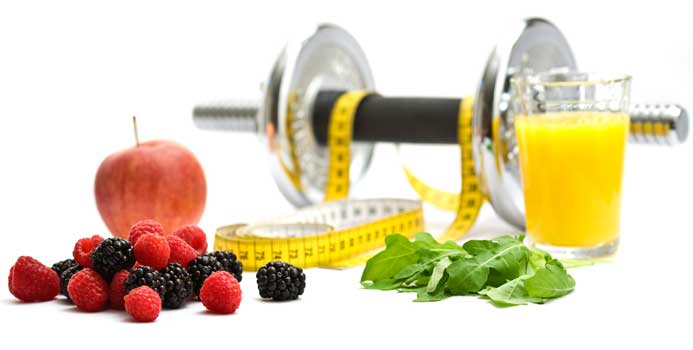We have an inherent preference for sweet-tasting foods and beverages. However, this innate preference for sweet foods, coupled with unlimited access to, and excessive consumption of, large portions of sweet foods, has contributed to the overweight and obesity epidemic that has plagued our nation. In the United States, 14.6 percent of adults' total calories come from added sugars, and research has found that larger amounts of added sugar in your diet correlates with higher overall calorie intake and a lower diet quality. This can heighten your risk of obesity, diabetes, and heart disease. Many have turned to artificial sweeteners to cut calories--and because of this, many questions and myths have arisen. So we've put together everything you need to know about them.
The 7 Main Types of Artificial or Non-Nutritive Sweeteners
There are a variety of artificial sweeteners approved by the Food and Drug Administration for use in the United States. The FDA has established an acceptable daily intake limit per kilogram of body weight, the ADI. We've converted this to teaspoons.*
 Aspartame: 160-220 times sweeter than sucrose (table sugar), brand names NutraSweet and Equal, ADI 50 mg/kg, not suitable for cooking/baking.
Aspartame: 160-220 times sweeter than sucrose (table sugar), brand names NutraSweet and Equal, ADI 50 mg/kg, not suitable for cooking/baking. Saccharin: 300 times sweeter than sucrose, brand names Sweet 'N Low, Sugar Twin, Sweet Twin, ADI 5 mg/kg, can be used in cooking/baking.
Saccharin: 300 times sweeter than sucrose, brand names Sweet 'N Low, Sugar Twin, Sweet Twin, ADI 5 mg/kg, can be used in cooking/baking.Sucralose: 600 times sweeter than sucrose, brand names Splenda and Nevella, ADI 5 mg/kg, can be used in cooking/baking.
 Acesulfame-K: 200 times sweeter than sucrose, brand names Sweet One and Sunett, ADI 15 mg/kg, can be used in cooking/baking.
Acesulfame-K: 200 times sweeter than sucrose, brand names Sweet One and Sunett, ADI 15 mg/kg, can be used in cooking/baking.  Stevia: 250-300 times sweeter than sucrose, brand names PuraVia, Truvia, SweetLeaf, Stevia in the Raw and Sun Crystals sugar-Stevia blend, ADI 4 mg/kg as steviol, some can be used in cooking/baking.
Stevia: 250-300 times sweeter than sucrose, brand names PuraVia, Truvia, SweetLeaf, Stevia in the Raw and Sun Crystals sugar-Stevia blend, ADI 4 mg/kg as steviol, some can be used in cooking/baking. Neotame: Often combined with other sweeteners, including nutritive and non-nutritive sweeteners, can be used in cooking/baking.
Sugar alcohols: These include erythritrol, hydrogenated starch hydrolysates, isomalt, lactitol, malitol, mannitol, sorbitol, and xylitol. These are naturally-occurring in fruits and vegetables and can also be man-made. These aren't necessary calorie-free like artificial sweeteners, but they contain fewer calories than regular sugar.

Separating Myth from Fact
There are two key myths surrounding artificial sweeteners that simply won't go away. So we broke 'em down:
1. Myth: Artificial sweeteners are unsafe.
Fact: Here's the formal position of the Academy of Nutrition and Dietetics:
...[C]onsumers can safely enjoy a range of nutritive and nonnutritive sweeteners when consumed within an eating plan that is guided by current federal nutrition recommendations, such as the Dietary Guidelines for Americans and the Dietary Reference Intakes, as well as individual health goals and personal preference.The safety of artificial sweeteners has been studied for decades, and they've been proven safe when used in moderation. They don't cause cancer, birth defects or behavior problems. The National Cancer Institute and additional health agencies agree they're safe.
2. Myth: Artificial sweeteners increase your appetite.
Fact: According to a recent analysis of all published research on low-calorie sweeteners and their effect on appetite, conducted by the Academy of Nutrition and Dietetics, low-calorie sweeteners do not have any effect on appetite in adults.
The Bottom Line
Using artificial sweeteners is a personal choice that individuals must make for themselves. Low-calorie sweeteners can aid in weight loss and weight maintenance efforts only if used in place of higher-calorie foods and beverages.
* This calculation is based on a person weighing 140 pounds. The grams to teaspoon measurement utilizes the sugar conversion of about 4 grams equaling 1 teaspoon.
Kari Hartel, RD, LD is a Registered, Licensed Dietitian and freelance writer based out of St. Louis, MO. Kari is passionate about nutrition education and the prevention of chronic disease through a healthy diet and active lifestyle. Kari holds a Bachelor of Science in Dietetics from Southeast Missouri State University and is committed to helping people lead healthy lives. She completed a yearlong dietetic internship at OSF St. Francis Medical Center in Peoria, IL, where she worked with a multitude of clients and patients with complicated diagnoses. She planned, marketed, and implemented nutrition education programs and cooking demonstrations for the general public as well as for special populations, including patients with cancer, heart disease, diabetes, Alzheimer's disease, obesity, and school-aged children. Contact Kari at [email protected].



